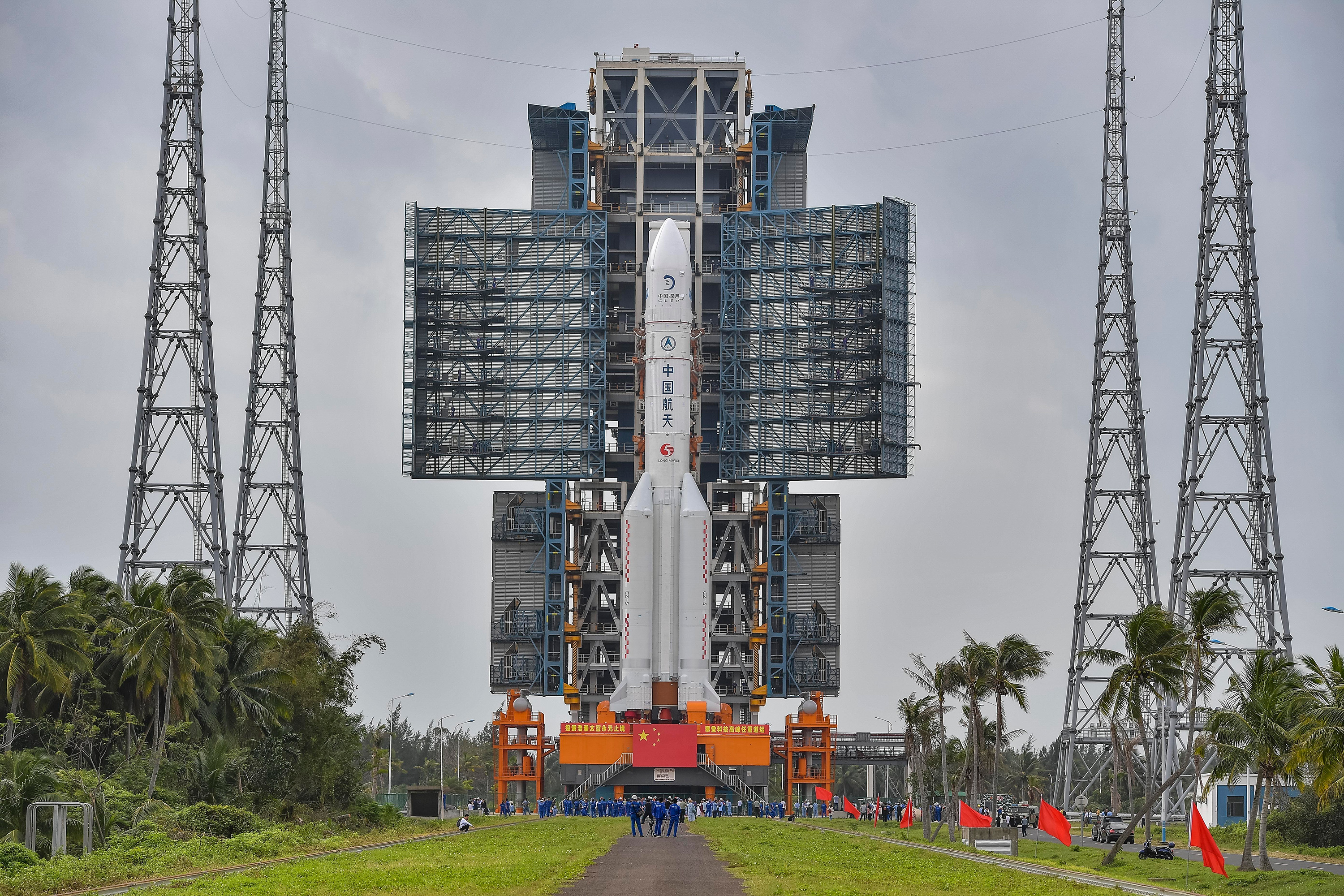China launches its first mission to bring moon rocks back to Earth

China launched its Chang’e 5 mission to the moon early Tuesday morning local time from the country’s launch site on Hainan Island in the South China Sea. The country is seeking to bring soil and rock samples from the lunar surface back to Earth for the first time in its history, for scientific study.
What’s going to happen: Chang’e 5 should make it to the moon on November 27. The entire mission consists of four parts: an orbiter, a lander, an ascent stage, and a return capsule. The spacecraft are not equipped with any heating units to help the onboard electronics withstand the super-cold temperatures of the lunar night. That means the mission must collect its sample and start heading back to Earth within 14 days (the length of the lunar day).
Tell me more: The lander will make its way down to the surface of the moon at a site close to Mons Rümker, a volcanic formation in the Oceanus Procellarum region that lies on the western edge of the near side of the moon. The lander will seek to scoop up at least four pounds of lunar soil from the surface. It will first drill about 6.5 feet into the ground and collect a core of lunar soil from below the surface. Then a robotic arm will grab soil from the surface itself. A near-infrared spectrometer and ground-penetrating radar will help Chang’e 5 analyze some of the soil while still on the ground, as well as ensuring that it avoids heavy or hazardous rocks.
Once the material is scooped up, the sample will be stored onto an ascent vehicle that will ferry it back to the orbiter flying above. The orbiter will then place the sample into a return capsule that should get back to Earth by December 17 and land somewhere in Inner Mongolia.
What we can learn: The area around Mons Rümker is thought to have rocks that are close to just over a billion years old. They could be the youngest moon rocks ever brought back to Earth—way younger than the 3- to 4-billion-year-old rocks brought back by Apollo missions. Those samples could help scientists better understand the history of the moon, shedding light on questions such as how it cooled over time and how its magnetic field dissipated. It will be the first time Chinese scientist have directly studied lunar material themselves, since Congress currently bars NASA from working with China and allowing it access to Apollo-era rocks.
Space race: If successful, this mission would make China just the third country in the world (after the US and the former Soviet Union) to bring materials from the moon's surface back to Earth. The last lunar sample return mission was the Soviet Union’s Luna 24 mission in 1976. Sample return missions are still incredibly difficult to pull off, and if it goes well, Chang’e 5 could be one of China’s biggest technological achievements to date.
Chang’e 5 is the latest mission in a very successful lunar exploration program. The program's most high-profile success so far has been Chang’e 4, a rover that became the first spacecraft to safely land on the far side of the moon. That mission has already led to quite a few bits of interesting science from a region of the moon hardly seen before. Chang’e 6, slated to be China’s second lunar sample return mission, should launch in 2023 or 2024.
Deep Dive
Space
The search for extraterrestrial life is targeting Jupiter’s icy moon Europa
NASA’s Europa Clipper mission will travel to one of Jupiter's largest moons to look for evidence of conditions that could support life.
How to safely watch and photograph the total solar eclipse
The solar eclipse this Monday, April 8, will be visible to millions. Here’s how to make the most of your experience.
How scientists are using quantum squeezing to push the limits of their sensors
Fuzziness may rule the quantum realm, but it can be manipulated to our advantage.
Stay connected
Get the latest updates from
MIT Technology Review
Discover special offers, top stories, upcoming events, and more.